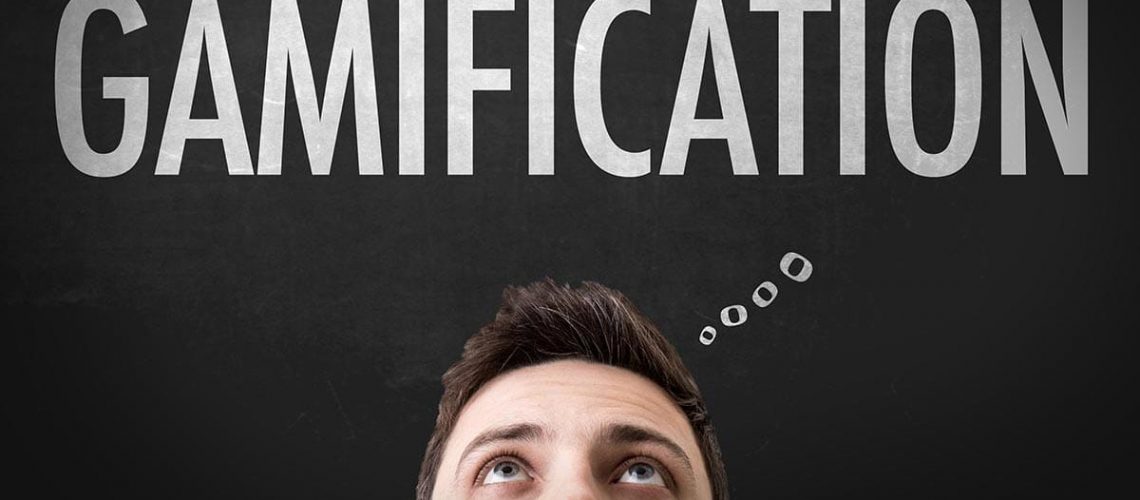If You Run a Call Center, Here’s the Problem You’re Facing
Call center agents work in an inherently stressful environment. From their first day on the job, they’re taught to stay tethered to the telephone headset. Break times, often two 15-minute breaks per shift, don’t give enough time for much watercooler chat, much less any real socializing with the people they share the workspace with for eight or more hours each day. Further, agents often think of key performance indicators (KPIs) that measure the efficiency of the call center operation as unwelcome. That’s because failing to meet KPI goals can trigger a counseling session with the manager and even a scolding or more serious disciplinary action. An agent often feels restricted, constrained, and bound by rigid scripts, rules, and regulations. Being a call center agent, even in the best of circumstances, often leads agents to leave the company or to be absent more often than usual.
What is Gamification?
To “gamify” an activity is the process of turning an activity or task into a game or something resembling a game. When successful, it takes the fun and engaging elements like those found in games and applies them to the call center job. But gamification isn’t a matter of playing. It’s a management and leadership technique designed to meet various human needs that, when met, improve the efficiency and effectiveness of the agents and the overall call center.
Successful gamification reduces absenteeism and turnover. It increases agent engagement with customers and increases productivity. Depending upon how gamification is set up, it can also promote healthy competition among agents and promote collaboration to achieve a common goal in the case of teams.
Where Did It Begin?
Yu-kai Chou, a Taiwanese American entrepreneur and lecturer, is widely credited with bringing gamification to the business world. He points out that humans have a variety of needs (drives), which he defines with an “Octalysis” diagram.
For instance, the need to feel “Meaning” in one’s life is universal. Similarly, the drive to have “Ownership” of things both tangible and intangible; the drive for “Social Influence,” “Empowerment,” and “Accomplishment,” are all characteristics of human beings. Gamifying a job focuses on satisfying those individual needs to better meet the needs of the organization.
Note, too, that “Scarcity,” “Unpredictability,” and “Avoidance” are drivers, but they focus on unpleasant, negative issues. They’re part of the human experience as well, but they’re drives that gamification can minimize. For example, gamification could minimize an agent’s natural drive to avoid unpredictable situations — such as not knowing how the boss evaluates him or her — by posting scores on a leaderboard so each agent can see their ranking.
Chou’s definition of these eight drives gives companies the psychological foundation necessary to build an effective game. Here are the steps involved in implementing gamification.
Begin Gamification by Analyzing Your Performance Metrics
The first step in gamifying is analyzing how your performance metrics can drive agent performance. In gamifying, you’ll begin with your key metrics, then turn them into a points-based competition. Agents will compete for recognition that can include gift cards, incentives, prizes, and other rewards. However, be careful about how you use those metrics in the game.
To illustrate, consider the relation between Average Handle Time (AHT) and Customer Satisfaction. One might expect that reducing AHT can lead to reduced costs. After all, if the time needed to resolve a call decreases, you may be able to work with fewer service desk agents in the long term. While that may be true, setting a goal to reduce AHT and then imposing those goals on call center agents will probably encourage them to rush through their calls, often failing to fully resolve the customer’s problem. So how does one improve AHT without threatening the quality of service given to customers?
An effective way to improve AHT is to let your agents know their individual AHTs are not measures of successful operation, but that customer satisfaction is. Putting the focus on customer satisfaction speaks to what service desks strive to continually improve; achieving customer satisfaction is fundamental to their operation.
This is not to say that agents with outlier AHTs shouldn’t be monitored and mentored. For instance, agents that fall at the far low end of the AHT scale may be giving callers sub-par service. Those at the far high end may need added training. Place your attention on the outliers and let your agents think “customer satisfaction” during each call rather than worrying about keeping their AHT metrics in the “good” range.
Continue By Establishing the Means of Recognition
Once performance metrics are identified, choose among the many ways to make the gamification enjoyable and engaging. These are a few of the ways it’s often done.
- A point system gives each participant a score that fluctuates each day to reflect recent performance.
- Digital or physical stickers, badges, or trophies give the participant “attaboys” for specific accomplishments.
- Performance graphs can show performance trends over time.
- Avatars, often created by each participant, give agents a “personification” that can increase engagement in the game.
- A monthly cash bonus for winners.
Conclusion
These suggestions simply highlight the benefits of gamifying the call center and offer a few ideas on how to go about it. In practice, you’ll want to study the subject to discover the pros and cons of gamification and how to implement it.
When done correctly, it can recharge and reinvigorate a call center. It can supply the impetus to reduce costs, increase customer satisfaction, and enhance the overall customer experience.



